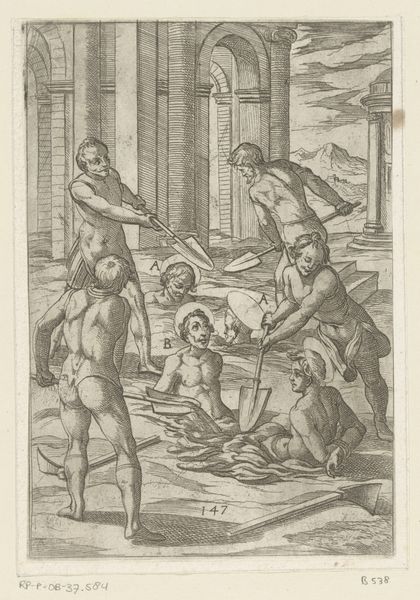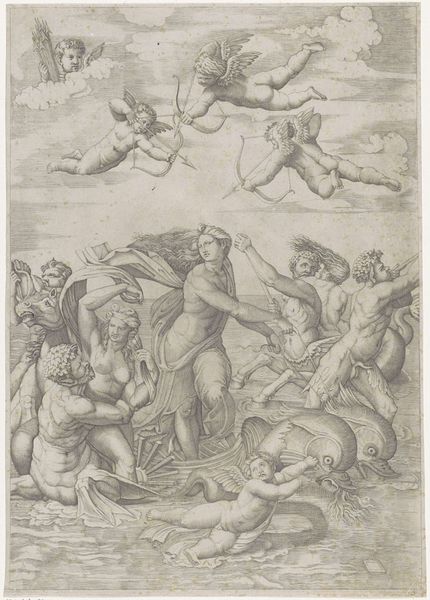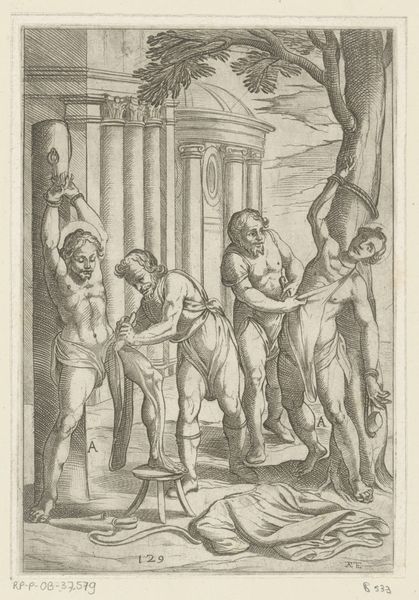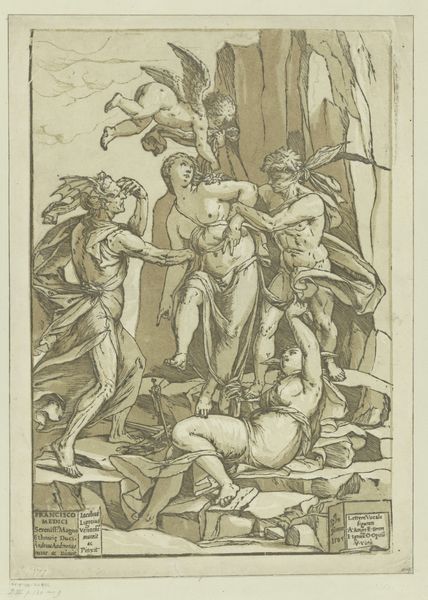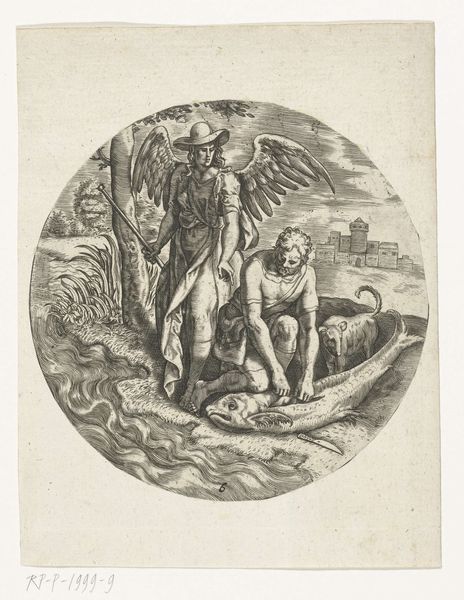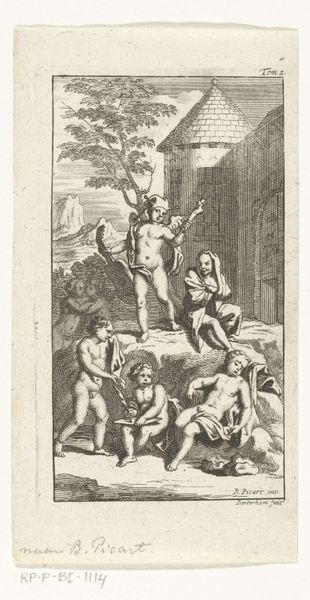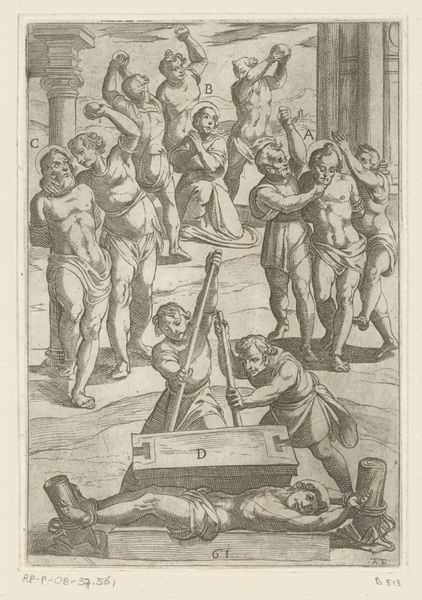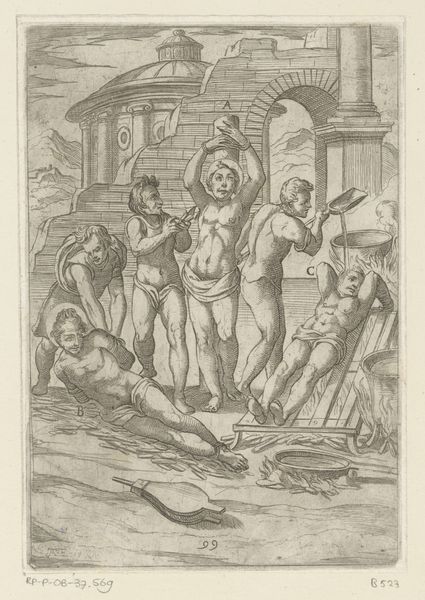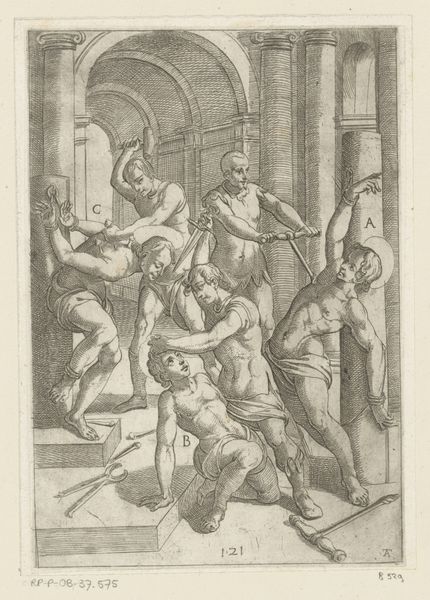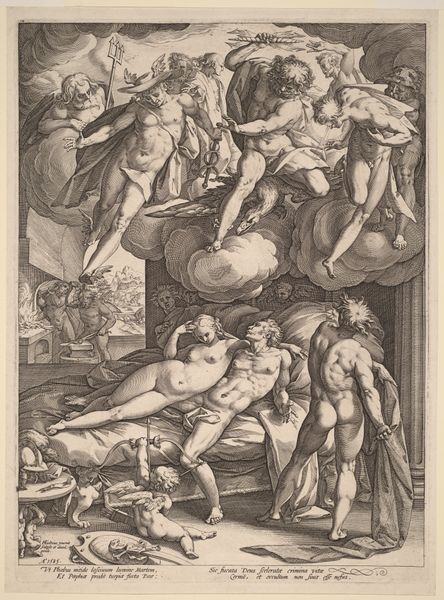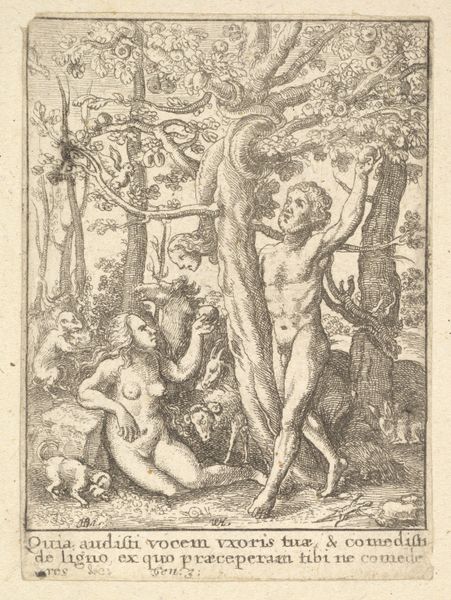
print, etching, engraving
#
baroque
# print
#
etching
#
old engraving style
#
figuration
#
history-painting
#
engraving
Dimensions: height 194 mm, width 133 mm
Copyright: Rijks Museum: Open Domain
Editor: This etching, titled "Foltering: doorboring van het lichaam" and created sometime between 1565 and 1630 by Antonio Tempesta, depicts a rather gruesome scene. There’s a sense of calculated brutality in the figures' poses and expressions. What historical or cultural context informs our understanding of such stark imagery? Curator: Look at how the symbols in this piece contribute to its enduring impact. Consider, for instance, the specific acts of torture. Piercing, burning...These were not just random acts of cruelty. They are symbols. Each action would have resonated with contemporary viewers, holding cultural and perhaps even theological weight. Torture as public spectacle reinforced power, inscribed narratives of guilt and retribution onto the very bodies of the condemned. It served as a visual language. How do you perceive that language translating to a modern audience? Editor: It’s chilling to think of it as a language of power. Do you think Tempesta intended to critique this, or simply document it? Curator: Perhaps a little of both. Tempesta was making a print, something that could be reproduced and disseminated. Prints often served a didactic function, moralizing or propagandizing. But I also sense a degree of engagement with human suffering. He is, after all, imbuing a cultural memory with emotional charge. Does the temple structure off in the background offer a clue to the intended audience and cultural values of the work? What associations does this reference evoke for you? Editor: That's a great point. I hadn't really considered the temple as integral to understanding the print's function. Thanks, I see this print with new eyes now. Curator: Indeed! These potent visual symbols persist through time, sparking continuous conversations and offering insight into ourselves.
Comments
No comments
Be the first to comment and join the conversation on the ultimate creative platform.
